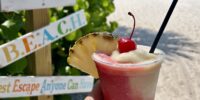Spot Nocturnal Birds on Sanibel Island
Sanibel Island is home to a huge variety of birds. While most people do their bird watching during the day, after the sun sets, many of these creatures are just waking up! Instead of stargazing, take a look around at the many Sanibel nocturnal birds. Here are some of the common ones you can spot at night while exploring or even relaxing right on Sundial Beach Resort & Spa’s beaches!
- Yellow-crowned Night-Heron: Nyctanassa violacea
You can find this bird lingering along the banks of the estuary. These birds make friends with the local alligators forming a symbiotic relationship. The Yellow-crowned Night-Heron builds their nests over alligator habitats, keeping their hatchlings protected from raccoons and other predators. This species feeds mainly off crayfish and crustaceans and can swallow them whole! They are most common in coastal marshes, barrier islands, and mangroves which makes Sanibel a perfect home for the species.
Fun Fact: This species shows up several times in the fossil record, and the earliest recorded fossil is 2–2.5 million years old.
- Black-crowned Night-Herons: Nycticorax nycticorax
Need a challenge? Try spotting this bird, similar to the Yellow-crowned Night Herons, these birds are just one of the two night-herons found on the island. The Black-crowned Night Heron is more secretive and more nocturnal than their yellow-crowned cousins. These birds are very social, nesting in groups that often include other species. They will nest colonially, many times with a dozen nests in a single tree. These colonies will last for 50 years or more.
Fun Fact: Young Black-crowned Night-Herons leave the nest at the age of 1 month but cannot fly until they are 6 weeks old. They move through the vegetation on foot, joining up in foraging flocks at night.
- Chuck-Will’s-Widow: Antrostomus carolinensis
Commonly mistaken for a Whip-poor-will, this bird can be found in pine woods and swamplands. These birds do not build nests, they just lay their eggs on the ground among dead leaves, pine needles, or bare dirt. These birds are very camouflaged and virtually invisible, so watch your step they could be right under your nose. During pre-dawn and at night you may spot this bird sitting on the road and roadsides, their eyes will spot bright orange in the headlights.
Fun Fact: You will most likely hear these birds before you see them. At night they will sing, and this is the most typical experience people have with the Chuck-Will’s-Widow.
- Great Horned Owl: Bubo virginianus
Are you a night owl? Well, so is this bird! Listen for them as you explore during dark. Though these birds have several calls, it is the territorial hoot that can be heard miles away. These predators will hunt for their meals which can include a variety of fish and amphibians, sometimes up to 2-3 times their size. When clenched, a Great Horned Owl’s strong talons require a force of 28 pounds to open. The owls use this deadly grip to sever the spine of large prey. Despite their impressive hunting skills and large talons, these owls aren’t all scary. With their large eyes and downy-soft feathers, they have a very sweet appearance.
Fun Fact: In this species, it is the females that are typically larger than the males.
- Common Nighthawk: Chordeiles minor
Whether you decide to watch the sunrise or sunset, be sure to keep your eye out for the Common Nighthawk. Dawn and dusk are mealtimes for this bird which feeds on almost exclusively insects. You may even see a Nighthawk nest as they will commonly place the nest out in the open on either beaches or forest floors. On summer evenings, keep an eye and an ear out for the male Common Nighthawk’s dramatic “booming” display flight. Flying at a height slightly above the treetops, he abruptly dives for the ground. As he peels out of his dive, he flexes his wings downward, and the air rushing across his wingtips makes a deep booming or whooshing sound, as if a racecar has just passed by.
Fun Fact: Because of this bird’s booming sounds and bat-like flight, he has also been called “BullBat”
- Barn Owl: Tyto alba
Gear up in your pajamas and look for this bird. The Barn Owl is a strict night owl. It silently hunts in the dark, which can make it hard to spot. Barn Owls have excellent low light vision and can see in the dark, and they also have great hearing aided by their satellite-dish-shaped faces. Many Nesting boxes have been built to accommodate and encourage the Sanibel bird population to grow. This mocks the natural home for a Barn Owl, which is usually holes in trees, crevices, or burrows.
Fun Fact: The oldest know North America Barn Owl lived to be over 15 years old!
For more on these and more of the birds that call Sanibel home, visit:












